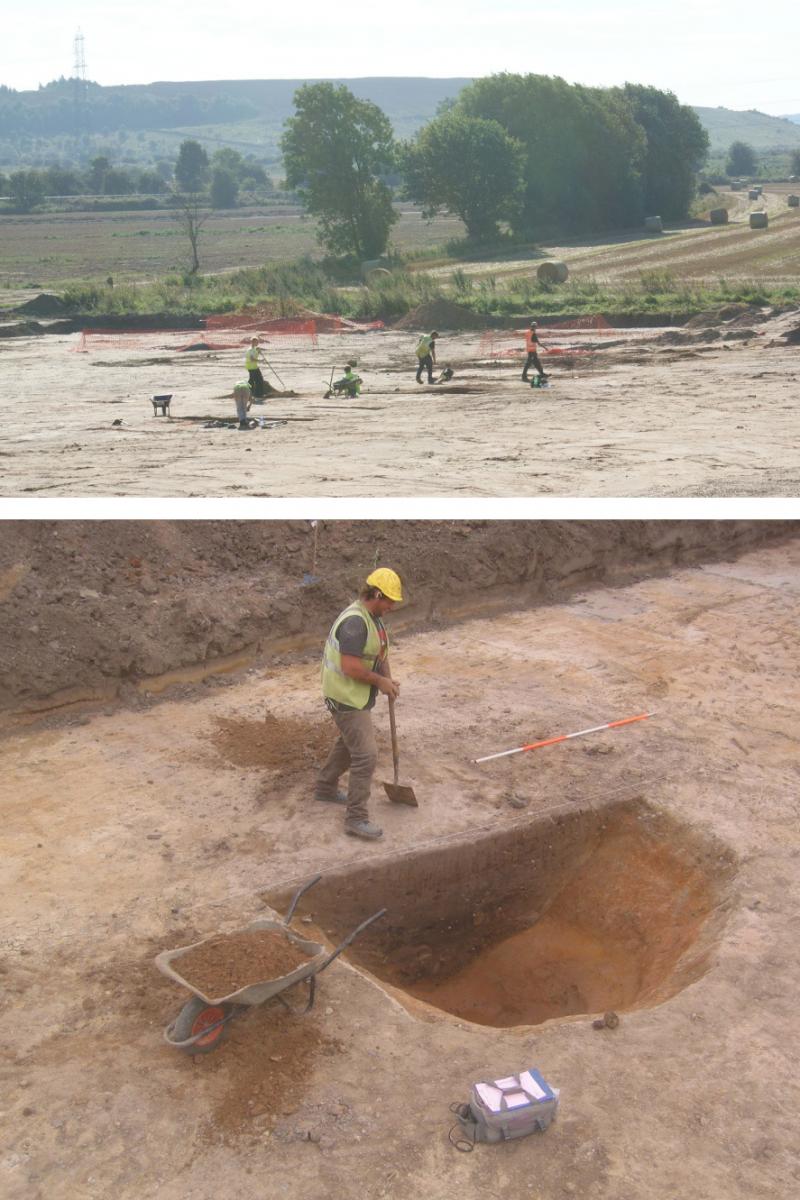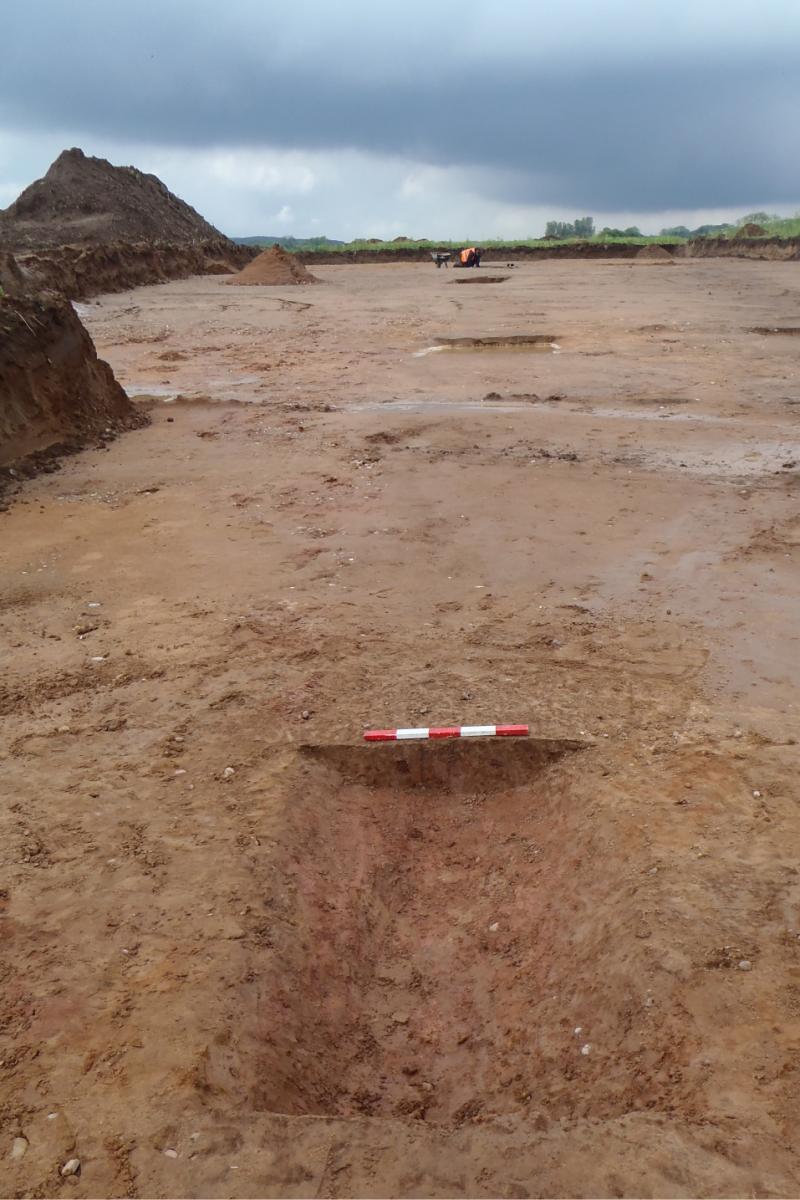53.478188, -1.061039
A team from Wessex Archaeology carried out the first phase of archaeological works at Rossington Inland Port, near Doncaster, South Yorkshire. CgMs Consulting commissioned Wessex Archaeology to carry out geophysical survey, evaluation and excavations of the 40 hectare site, which has been carried out over two and half years. Our work with CgMs has provided an excellent overview of the archaeology of the site, which we hope to publish in the Yorkshire Archaeological Journal.
The site lies approximately 4 km west of the Rossington Roman fort, built in the mid-1st century AD, and close to the nearby Romano-British pottery production site at Rossington Bridge. During the medieval period the site was largely wetland common, with much of the present field pattern probably resulting from a programme of drainage and land improvement by the Dutch engineer Cornelius Vermuyden in the early 17th century.
The work identified a small sub-square enclosure connected to field system ditches, and four adjacent waterholes, with the site producing a small assemblage of finds including Romano-British pottery and a cremation burial. The enclosure and associated ditches were integral parts of an extensive field system visible as cropmarks in the surrounding landscape, and confirmed by the results of the geophysical survey.


The fields, particularly to the north of the site, reflect a degree of large-scale landscape organisation, and appear to be arranged in blocks set radially around a large field or enclosure around 700 m north of the site. The distribution of the field ditches around the site largely reflects the areas of dry land, with the site lying close to the boundary of the alluvial levels flanking the River Torne to the east.
Such enclosures may have had some role in the management of cattle and other livestock, although the fact that the area has been heavily ploughed may help account for the dearth of internal settlement features, such as postholes. The enclosures were probably components of a mixed agricultural economy, possibly organised from villas, such as those to the south-east of the site at Stancil, and to the west at Loversall and Wadworth. Such villas may have replaced earlier centres of settlement and landscape control, perhaps including the double-ditched enclosure.
Andrew Norton, Wessex Archaeology’s Regional Manager in Sheffield said "excavation work is due to continue on the site, and the new distribution centre provides an excellent opportunity to understand the archaeology in over a wide landscape – particularly when combined with other projects that we are working on in Rossington".